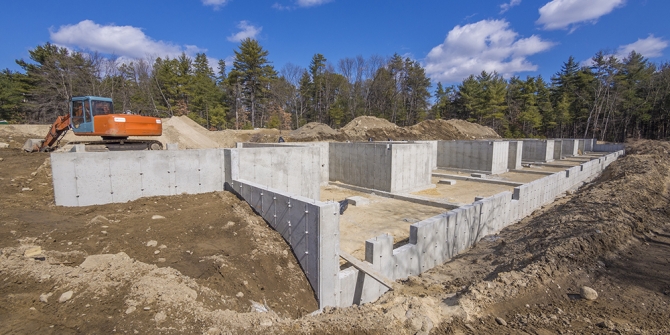When you think of a building foundation, many people imagine a chunk of concrete buried down in the ground to support a column or wall and most of the time this is accurate. A foundation can consist of a shallow footing similar to the one imagined above or it could consist of a series of structural members or piling driven into the ground. These different foundation types will dictate how the building will perform above based upon the soil conditions on site.
Shallow foundations are the most common types. They are the most cost effective and many times will be sufficient to support the building. This type of foundation, however, can only carry as much weight as the soil below will allow. This is one reason why we always recommend having a geotechnical engineer involved on every project. They can help answer the question “what can the soil support?” and take a lot of the liability off of the design team as well as provide peace of mind to the owner and your structural engineer needs this information in order to properly design the footings for the structure.
Many times the soil conditions on site may not be sufficient to support the weight of the building. Some reasons for this can be compressible soils like clays or soils that could liquefy during an earthquake like those with a lot of sand. These poor soil conditions may be a reason to support the building on a deep foundation. This usually consists of either a wood, steel or concrete pile that is driven below grade. The capacity of the pile is gained through the friction of the pile with the surrounding soil or the bearing of the pile on deeper more suitable soils or a combination of both. The team work between the structural engineer and a geotechnical engineer is critical because one depends on the other to make the best recommendations for the site.
The decision on which type of foundation to use for a building should be made as a team. There are things to consider such as the expected performance of the building, equipment sensitive to movement, scour effects from flooding or soil liquefaction due to high seismic activity. We’ve designed many foundations for residences along the coast where the homeowner selected a pile foundation because they wanted the peace of mind that comes with it. Most of the time a pile foundation will provide the most stability for the structure above, but it will be more expensive and not always required. We prefer to have as much involvement from the geotechnical engineer as possible so that all options can be explored. Including a knowledgeable structural engineer and geotechnical engineer on the design team is critical to the long-term performance of your building.

